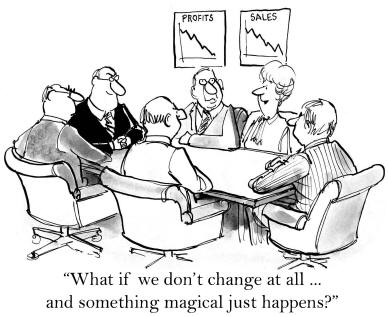Last week I was in Amsterdam with the Disruptive Innovators Network (you can read my daily updates, here, here, and here) and it got me thinking about how we make the shift from current behaviours and ways of operating.
Travelling across the city you’d think Amsterdam had been designed in a lab rather than being a place that has evolved over 746 years. It’s great to walk around, there are no traffic jams, and there’s an easy and cheap to use train, metro and tram system.
And then there’s the bikes. The Netherlands boasts 22,000 miles of cycle paths. More than a quarter of all trips are made by bicycle, compared with less than 2% in the UK – and this rises to over 38% in Amsterdam.
Amsterdam wasn’t built that way – in fact less than 50 years ago the city was at risk of being overrun by cars.

So how did they change? The Dutch understood design thinking and that just because you build something people don’t automatically follow. It wasn’t enough to just provide cycle lanes, you had to make cyclists feel as safe as if they were in a car. And that meant rebalancing the power of the automobile. This has been done through wider cycle lanes protected from traffic and design principles. Many of the shared spaces – where cars do not rule – adhere to Hans Monderman’s theory that increasing traffic regulations reduces personal responsibility, the need for drivers and pedestrians to pay attention to what is happening around them.
The Dutch have successfully taken a problem and innovated around it, completely changing people’s behaviours NOT by penalising them, but through creating a more fulfilling and pleasant way to live.
MOVING AWAY FROM A CULTURE OF CONVENIENCE
As humans we have become more and more impatient, demanding immediacy and instant gratification through increasingly digital and frictionless experiences. Convenience is now the driving factor when making purchases in our digital economy and it comes at a price.
In April 2020 Amsterdam became the first municipality in the world to publish a City Doughnut – a vision to emerge from COVID-19 as a city that ensures a good life for everyone. The vision is to transition Amsterdam into a circular city, adopting a smarter approach to managing scarce raw materials, production and consumption, and creating more jobs for everyone.
Why is it called a doughnut? It’s inspired by a 2012 Oxfam report by Kate Raworth. This was later developed in her book Doughnut Economics: seven ways to think like a 21st century economist.
For example, one of the venues was Circl restuarant which is shaped like a doughnut and is the centre of a movement to spread circular economy principles. Accordingly they start at the end – cooking with what’s leftover. Stale bread, leftover fruit and veg from supermarkets. Chefs adhere to circular principles and fight against food waste every day. They use sustainable cooking techniques such as preserving and fermenting in the kitchen.
The building itself is pretty impressive. Built around circularity principles, it reuses the fabric of company uniforms as heat and sound insulation; and you only get your coffee if you learn sign language to communicate with a deaf Ukrainian refugee. (I learned cappuccino – by far the easiest).

Additionally we heard about demolition crews being reframed as urban miners. Amsterdam (or any other town, city or estate) can be viewed as an urban mine with a wealth of metals such as aluminum, copper, gold and steel contained within its built environment. It is less costly to mine urban buildings and structures such as high-rise buildings for steel, cables for copper, window frames for aluminum and phones for gold. Nothing is ‘waste’.
What’s clear for me is the ambition here goes way beyond the minimum standard/box ticking approach to ‘sustainability’ we have in much of the UK. Paradigm shift is when a big chunk of a community swaps their old conceptions for new ones. That’s what is happening here.
One of the reasons that the wheels are starting to come off the Net Zero wagon is that it has quite a pessimistic message, asking people to give things up rather than live better lives. Now we’re all more literate about climate change we’re also more aware of greenwashing and virtue signalling activism. When tobacco companies outperform Tesla or a social non-profit on their environmental and social goals people stop believing in them.
HOW TO MAKE A PARADIGM SHIFT
We form a paradigm through the set of concepts we accept and the actions we take repeatedly. A paradigm shift occurs when the prevailing mental model has so many anomalies that it breaks and a new sense of the world is formed.
Today in the UK marks the 15th anniversary of the introduction of smokefree law, protecting people from secondhand smoke in restaurants, pubs, bars, shops, offices and workplaces. To anyone under 30 reading this it’s probably inconceivable for you to imagine a reality where you could sit smoking a cigarette in the cinema or even on an airplane. That reality existed: I know because I grew up in it.
It’s worth watching Elon Musk’s 2 minute explanation of First Principle thinking which allows you to make change in clear leaps, rather than building small improvements onto something that already exists. Musk gives an example of the first automobile. While everyone else was trying to improve horse-drawn carriages, someone looked at the fundamentals of transportation and the combustion engine in order to create a car.
Reality can shift quickly if enough people break the model of what is possible.
What are the mental models that your organisation holds onto today that could be vanquished tomorrow?



